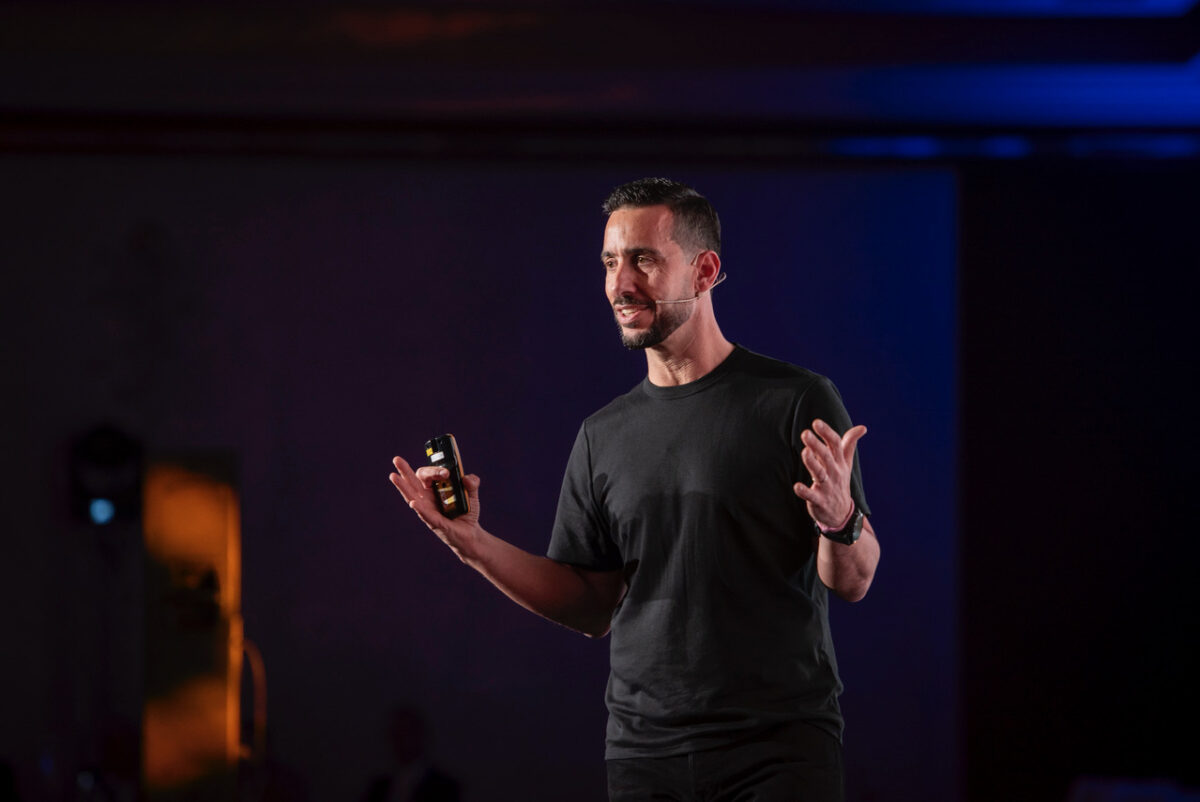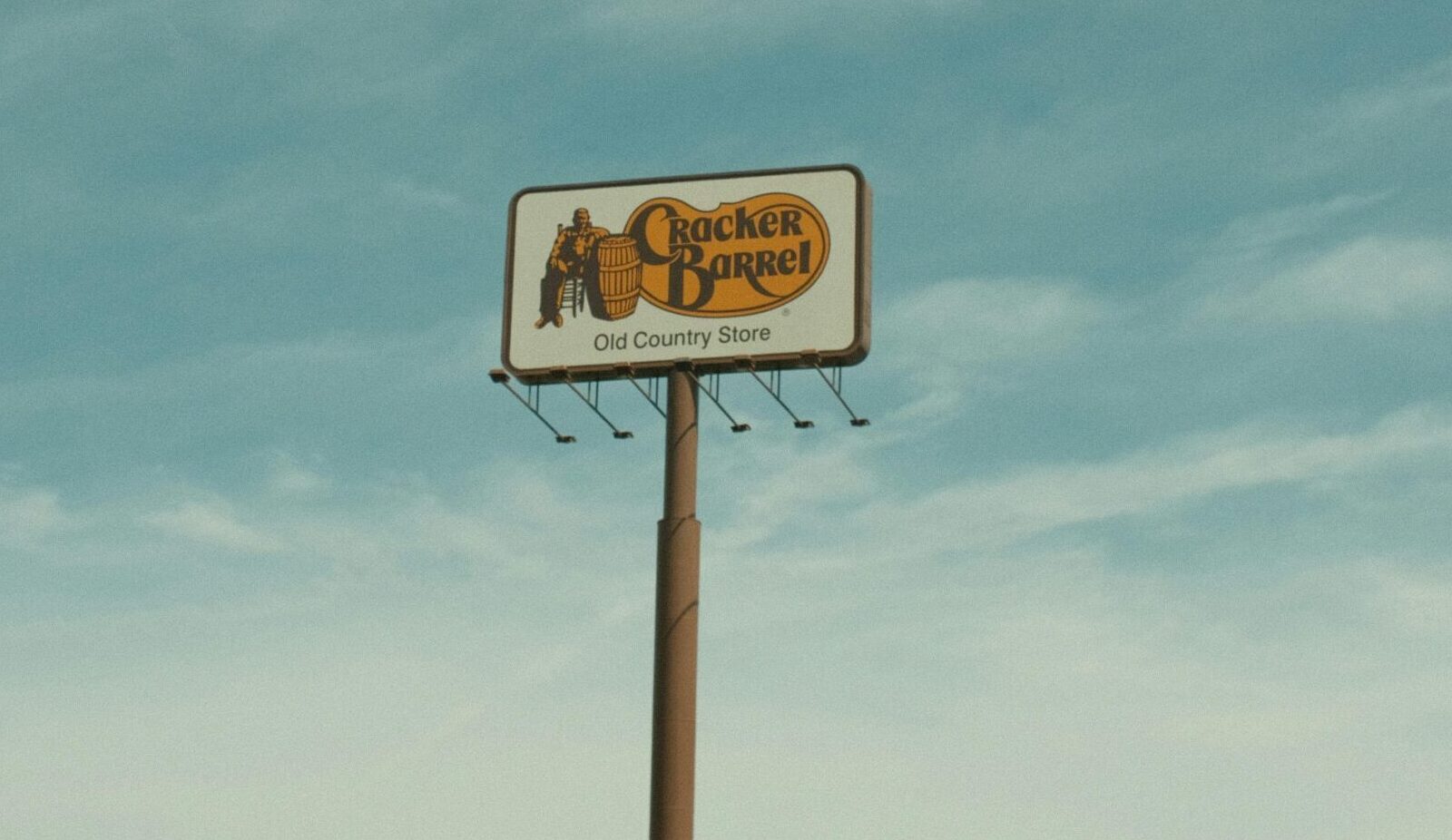Cracker Barrel, the Tennessee-based restaurant chain with more than 600 locations, has reversed its decision to introduce a new logo after a wave of criticism.
The company announced it would restore its original branding after widespread backlash to a simplified, text-only design that removed the familiar image of a man seated against a barrel.
“We said we would listen, and we have. Our new logo is going away and our ‘Old Timer’ will remain,” the company confirmed, adding that its focus remains on “delicious food, warm welcomes, and the kind of country hospitality that feels like family.”
We thank our guests for sharing your voices and love for Cracker Barrel. We said we would listen, and we have. Our new logo is going away and our “Old Timer” will remain.
— Cracker Barrel (@CrackerBarrel) August 26, 2025
At Cracker Barrel, it’s always been – and always will be – about serving up delicious food, warm… pic.twitter.com/C32QMLOeq0
Shares, which had fallen in the days after the redesign, rebounded by more than seven per cent following the reversal. US President Donald Trump himself congratulated the company, saying: “All of your fans very much appreciate it. Good luck into the future. Make lots of money and, most importantly, make your customers happy again!”
The episode highlights how reputational risks and political pressures can play a decisive role in branding decisions.
But closer to home, it also raises questions about how businesses should approach rebranding in a way that strengthens rather than damages customer trust.
‘A brand is one of the most valuable assets‘
For Peter-Jan Grech, Founder and CEO of BRND WGN, rebranding must never be treated as a superficial design exercise.

“A brand is one of the most valuable assets any company owns. It’s a bond with employees, stakeholders, and, most importantly, customers,” he tells MaltaCEOs.mt.
“Rebranding isn’t just about looks; it’s about meaning. It signals direction and intent. For heritage brands especially, change must be handled with care. These brands live in people’s memories and communities, sometimes inspiring tribes rather than just customer groups. Get it right, and rebranding strengthens loyalty. Get it wrong, and passionate fans can turn as passionately into critics overnight.”
He adds that modernisation and heritage must be balanced carefully. “Relevance matters, even for icons. Brands need to stay in tune with shifting needs, but they can’t ignore what their core audience holds sacred. Modernisation doesn’t always mean a sudden break; it can be a careful evolution.”
Avoiding the most common pitfalls
Mr Grech has seen the same mistakes repeated over his two decades of brand consultancy. He outlined six pitfalls that companies frequently fall into:
- Change theatre – swapping a logo without changing behaviours, products or services.
- Rebranding from boredom – internal teams tire of a brand before customers do.
- Ignoring the tribe – heritage brands often have communities, not just customers.
- Ignoring employees – if staff cannot live the new story, customers will not buy it.
- Big bang with no plan – sudden overhauls magnify risks if poorly executed.
- No metrics – without measuring impact, success cannot be managed.
In each case, the solution is to align branding with strategy, evidence, employees, and long-term monitoring. “A rebrand that is not tied to a business shift is cosmetic surgery,” Mr Grech cautions. “Both employees and customers can tell.”
‘Re-branding is more than just aesthetics‘

Elise Galea, a marketing executive, echoes this view, warning that companies often underestimate what is at stake.
“Companies tend to believe that re-branding is just aesthetic-based. However, it’s more than that; it starts from company culture, to who is being targeted, approaches, supply chain, etc.,” she says.
For Ms Galea, listening to customer behaviour is critical in striking the right balance between modernisation and tradition. “See what people find interest in either through what is selling, what is being clicked the most, or create a survey to gain insights. From there you can distinguish which elements represent the brand’s core guidelines and what approaches to implement in a modern way.”
She added that inconsistency and a lack of understanding of what clients want to see are the most common pitfalls when companies attempt a rebrand.
Lessons from Cracker Barrel
The Cracker Barrel episode may seem like an American culture-war flashpoint, but the underlying lesson is universal. When rebrands are treated as surface-level design updates, they can backfire spectacularly, eroding loyalty instead of strengthening it.
As Mr Grech concludes, “today the brands that prioritise people and trust outperform, because human interactions carry more weight in an increasingly transactional world.”
Malta’s transport dilemma: Paying the price for movement
We talk about the cost of a metro, but the real question is this – what is the cost of ...
Malta’s growth dilemma: We’re running out of land – but not of ideas
Malta is hitting the natural limits of 'more', but it’s time to master 'better', says Stephanie Fabri.
Experts debate ethics and pragmatism in Malta’s Binance donation controversy
Economist and lawyer weigh in on Malta’s Binance donation dispute
KPMG Malta appoints Ruth Bonnici and Louise Grima as Directors within its Tax function
Both bring extensive expertise in international and indirect taxation.









